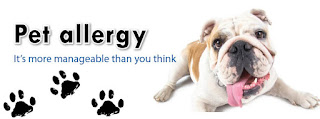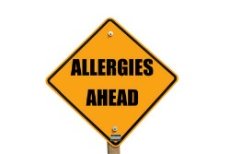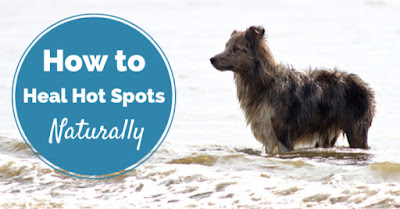Similar to people, allergies in dogs are managed and not cured. The dog’s body is hypersensitive to something and the reaction to that hypersensitivity is itching. Dogs can be allergic to their food, flea bites, grass and pollen in their environment, or direct contact with certain compounds like laundry soap or hay. The first step is to diagnose your dog's itching, scratching and chewing as a skin allergy problem. The challenge for you and your veterinarian is figuring out the causes and finding an effective treatment.
Monitoring Your Dog’s Itchiness
1.Pay attention to which parts of your dog's body are itchy. Is there a certain area on the body that is itchier than others? Does your pet lick his feet, under his tail or along his belly?
The most common areas of irritation for allergic dogs are around the back and tail, the abdomen, and the legs and paws.
2. Look for hot spots on your dog’s skin. It can be common that your dog’s itching is so severe that he chews his skin to the point of creating a “hot spot”. This skin lesion can develop overnight and can get very large very quickly. The skin is pink, moist, hot and painful. You may even see sticky material oozing from the wound created. These are infected open wounds and need veterinary intervention to give your pet relief.
3. Consider the timing. There might be a particular time of year that your dog is itchier. Perhaps he is itchy after being on the lawn or after eating a certain food. By noticing patterns, you will help to narrow the focus of your pet’s treatment to help with the itching Chronic cases of itching might result in the thickening and roughening of the skin so that it looks like elephant hide.Hot spots are often the symptom of allergies to fleas, foods, grass, mold or other environmental substances. There may be more complicated underlying conditions such as low thyroid (hypothyroidism) levels or Cushing’s disease (hyperadrenocorticism). Secondary bacterial and yeast (malassezia) infections are not uncommon and will require specially tailored treatment
Treatment
Simply use Good Ayurveda Pet Products for your Pet,Petveda is Provide Ayurveda Pet Products link Petveda Shampoo,Petveda Spray,Petveda Shampoo Bar,Petveda conditioner,
PETVEDA products are a set of solution based pet grooming products that help maintain your pets’ hygiene and healthy skin and coats. Good grooming is especially important for animals with long hair and those that have trouble keeping themselves clean. It is believed that taking care of this essential need of these animals not only makes them feel comfortable but helps them live a better life
If you know more about Petveda Products visit www.petveda.com
Monitoring Your Dog’s Itchiness
1.Pay attention to which parts of your dog's body are itchy. Is there a certain area on the body that is itchier than others? Does your pet lick his feet, under his tail or along his belly?
The most common areas of irritation for allergic dogs are around the back and tail, the abdomen, and the legs and paws.
3. Consider the timing. There might be a particular time of year that your dog is itchier. Perhaps he is itchy after being on the lawn or after eating a certain food. By noticing patterns, you will help to narrow the focus of your pet’s treatment to help with the itching Chronic cases of itching might result in the thickening and roughening of the skin so that it looks like elephant hide.Hot spots are often the symptom of allergies to fleas, foods, grass, mold or other environmental substances. There may be more complicated underlying conditions such as low thyroid (hypothyroidism) levels or Cushing’s disease (hyperadrenocorticism). Secondary bacterial and yeast (malassezia) infections are not uncommon and will require specially tailored treatment
Treatment
Simply use Good Ayurveda Pet Products for your Pet,Petveda is Provide Ayurveda Pet Products link Petveda Shampoo,Petveda Spray,Petveda Shampoo Bar,Petveda conditioner,
PETVEDA products are a set of solution based pet grooming products that help maintain your pets’ hygiene and healthy skin and coats. Good grooming is especially important for animals with long hair and those that have trouble keeping themselves clean. It is believed that taking care of this essential need of these animals not only makes them feel comfortable but helps them live a better life
If you know more about Petveda Products visit www.petveda.com











